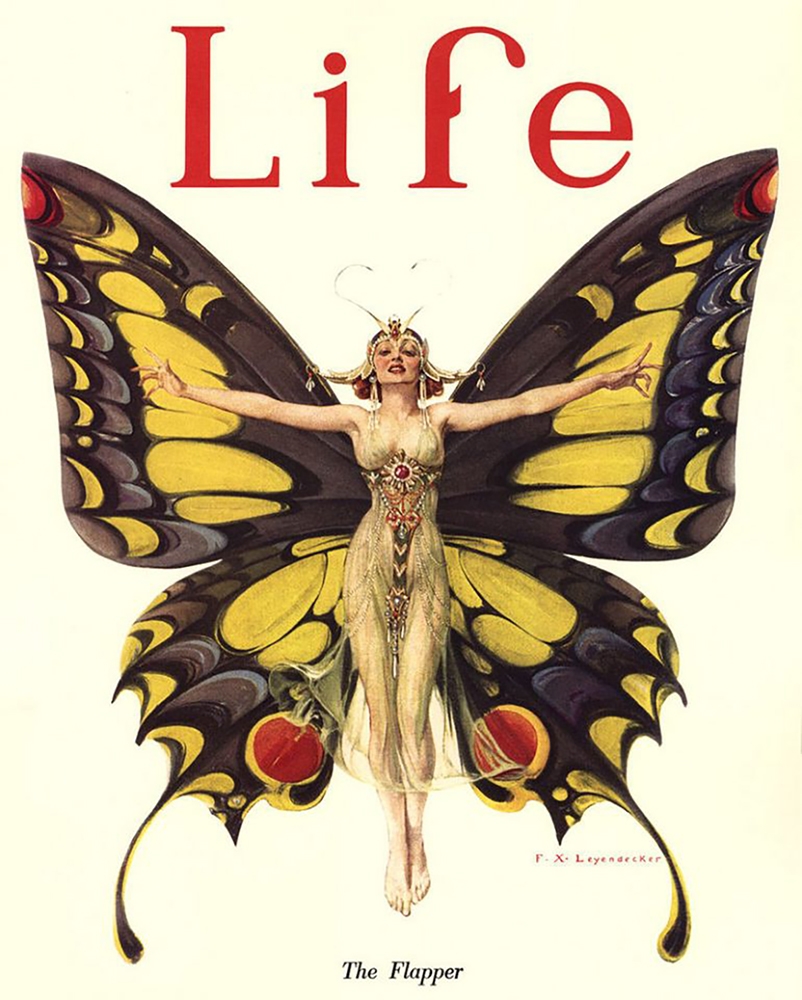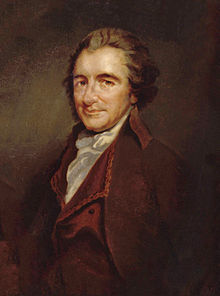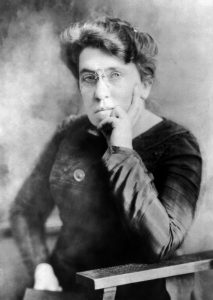Winner of the Fall 2016 StMU History Media Award for
Best Article in the Category of “Culture”
When one thinks of the 1920’s era one immediately thinks about Flappers. A flapper was considered a young woman who was very fashionable. This was a young female who enjoyed life to the fullest, flouting her unconventional standards of behavior and carefree party lifestyle.1 The spirit behind this movement was all about leaving the traditional ways of life behind and transforming into an independent woman.

Before World War I, the concept of femininity was referred to as the Gibson Girl. This term was used to describe these new independent and often well educated women. Gibson girls wore their hair long, pinned up and adorned with beautiful hats. They completed their ensemble by wearing long skirts and blouses that buttoned up to their necks. Despite their feminine appearance, these women were more than capable of doing the same things that men did. Examples of this include activities such as playing sports: skating, golfing, bicycling, tennis. These young ladies did not go out until they were asked properly by a young man who had good intentions and a promise of marrying them. Gibson Girls soon broke away from their traditional ways.2
In 1915, two years before America’s entry into World War I, a famous author by the name of H.L. Mencken introduced the word “Flapper” to the United States. Mencken stated that a flapper was “a woman who consumed music, literature and periodicals voraciously taking her cues for behavior and style from the media in front of her rather than the moral codes of decorum.”3 Another famous author, F. Scott Fitzgerald, famous for his classic novel The Great Gatsby, described the flapper as “lovely, expensive, and about nineteen.” John Held Jr., who was an American cartoonist, emphasized the flapper by drawing young girls wearing unbuckled galoshes that would make a “flapping” noise when walking.4 Despite the many different terms, Flappers were described essentially the same way: they were young girls who enjoyed the party life and had a sense of fashion.
After World War I ended in 1918, many things had changed for the men returning home, particularly the roles and values that women were embracing. The traditional values were gone and in their place came a faster, sleeker, and more daring approach to life. This time period not only ushered in an era of change in values, but it also established a new baseline for what was considered feminine. The Flapper Age was born and it brought with it a new and independent woman. These women smoked, drank, voted, cut their hair into bobs, wore eyeliner, and went to as many parties as they could—enjoying every bit of the social life along the way.5

During the 1920’s, fashion changed drastically due to a very famous designer, Coco Chanel. This woman helped flapper fashion to stand on its own. Typical flapper clothing included a simple sack like dress, which allowed women of all classes to make their own dresses and remain on trend.6 The waist of the dress was dropped to the hipline, and the skirt fell just below the knee. Stockings made of rayon were added and worn over a garter belt. To complete the look, bracelets were added and necklaces ran from the neck to the waist. Cloche hats sat atop their heads and drew the eye into a new hairstyle trend known as the bob.7 The make-up of flappers consisted of a red powder or cream that was used for the lips and cheek, eye-liner, powder for the face, and red lipstick that became very popular.
On January 19, 1919, the Eighteenth Amendment, also known as the Volstead Act, came into effect and gave way to the Prohibition Era in which the sale, production, importation, and transportation of alcohol was banned across the nation.8 This change in the legal system caused the sale and consumption of liquor and alcohol to go underground. The most rebellious thing a flapper could do at this time was to consume alcohol, and these young girls had a reputation for being giddy. The following year, on August 18, 1920, the Nineteenth Amendment was passed and women now had the right to vote.9 In 1924, the first radio launched more than 600 commercial channels around the U.S. The radio at the time was the social media on the flapper life. Many young girls swarmed the theaters to see the image of the flapper on screen. Famous actress Clara Bow, starred in the “Flapper” and made the look iconic.
On December 2, 1927, Henry Ford invented the Model A vehicle and car sales increased.10 Women were now owners of vehicles, and the car became a lifeline to a world full of excitement for the flapper in particular. With no one to stop them, they were free to come and go as they pleased. Liberated women were now able to go out and enjoy dancing during this era that was the Jazz Age. The most popular thing for a flapper to do was to go to a nightclub where she would drink, dance, and show off her moves. The era of the Flapper, however, came to an end with the Wall Street Crash of 1929. Many young women lost their jobs and the incomes that had given them such independence.11
Life in the 1920’s left a huge legacy for women to this day. Flappers and the forward-thinking concept of the modern woman is what initiated the change in society for how women were viewed then as well as how they continue to be viewed in present day. With their bold choice in attire, along with their new views and attitudes regarding femininity, both in fashion as well as social conduct, Flappers left behind the old traditional ways and paved the road for a more liberated female.
- Salem Press Biographical Encyclopedia, January 2016, s.v. “Flappers,” by R.L. Smith. ↵
- Kelly B. Sagert, Flappers: A Guide to an American Subculture (Greenwood Publishing Group, 2010), 1-2. ↵
- Brian DiPaolo, Flappers: Issues & Controversies in American History (Infobase Publishing, 2007), 4-5. ↵
- DiPaolo, Flappers: Issues & Controversies in American History, 4-5. ↵
- Soo Hyun Park, Flapper Fashion In the Context of Cultural Changes of America in the 1920’s (CUNY Academic Works, 2014), 1-2. ↵
- Salem Press Biographical Encyclopedia, January, 2016, s.v. “Flappers,” by R.L. Smith. ↵
- Sagert, Flappers: A Guide to an American Subculture, 3. ↵
- Sagert, Flappers: A Guide to an American Subculture, 5. ↵
- DiPaolo, Flappers: Issues & Controversies in American History, 2. ↵
- F.L. Allen, Only Yesterday: An Informal History of the Nineteen Twenties (National Humanities Center, 1931), 5. ↵
- Alan Brinkley, American History: Connecting with the Past Volume 2, 15 edition (New York: McGraw-Hill Education, 2014), 643. ↵




213 comments
Cecilia Schneider
As the article states, flappers are one of the first images that come to mind when thinking of the “Roaring ’20s,” but this article did add information I hadn’t realized. Such as how quickly the flappers came about and vanished. The Gibson girl, whom I hadn’t ever heard of before, is such a complete contrast of fashion and mannered behavior to the flappers, which is one reason that it is so surprising how quickly the flappers came about. These young women truly did lead to the liberation of women today. Fashion, manners, partying, drinking, smoking, and just being more independent are prevalent ideas in the minds of women today just as they were to the flappers.
Magali
very cool article!
Alaina De Leon
Flappers were a statement part of the 1920’s. Having to stand out as a women back then seems to be scary yet thrilling and also taboo. The movement that led for more expression was only to make strides for women as a whole. Without them I feel as if it would’ve taken that much longer to experience a little bit of justice.These women meant empowerment just like all women do now and that is truly fitting. Great article I’m im glad I got to read this just a day after International Women’s Day.
Eric Hernandez
Before reading this article, I didn’t really know what a flapper was. It is amazing how the women of that time were able to break the barriers and start a movement that has created a huge image for women that lives long in history. I think that this movement was a crucial part of history in helping women to be able to express themselves as time has progressed.
Alexis Lopez
Aurora Torres did a great job of explaining what flappers are and how they started and originated from. Flappers are females that wanted to live life and leave the traditional ways behind. I actually didn’t know this much information about the flappers. I think it was interesting to learn about how Coco Chanel played a big part with the flapper’s fashion. Overall, I really enjoyed reading this article and gaining more information about the history of flapper’s.
Citlalli Rivera
I think the Flapper woman was very influential to the concept of a mainstream independent women and the first steps to a society accepting non-traditional roles. Flapper culture definitely made its mark as an identifiable aesthetic and as an identifier for the 20s when compared to the other decades. This article did a great job of describing the aesthetic and dress of flapper women! I find many similarities between 1920s women and 2020 women with new ways of dressing and breaking away from the guidelines of traditional conservatism. Its almost as if history repeats itself or something like that haha!
Lesley Martinez
The 1920s was a milestone era for women in America. With the ratification of the 19th amendment, the rise of the “flappers,” and the availability of cars, women were thriving. I had no idea that Coco Chanel became a famous designer during the 1920s as she is still a famous designer today. Being able to spark these types of conversations is what continues to impact the rights of women. This is a great article!
Emmanuel Diaz
I applaud the flappers who really did break the social norms and lived their life to the fullest. For many eras women have been covered up and not being able to express themselves by what they wear or show what they want to show to what they feel makes them beautiful. They have always been restricted for their clothing but as we can see in today’s world that there have been many changes for females and especially more empowerment for women! No woman ever made history by following the rules!
Amanda Uribe
I wish I could go back in time and experience this era. I think that the women of the 1920’s were so interesting. I think it was cool how much women got to go into their element after the war ended. It was a time of progress for women. It is crazy to think that women would finally get their right to vote at these times. Great article.
Azucena Cuevas
I knew only a little bit about the fashion and trends women adapted around the 1920s but i had no idea the impact it left. It was a great read, and I liked how the article states how the roles began to change and as if fashion was used as a vessel to empowerment. I also didn’t know the term “flappers” and how it was used wto represent young women who enjoyed a fun time.